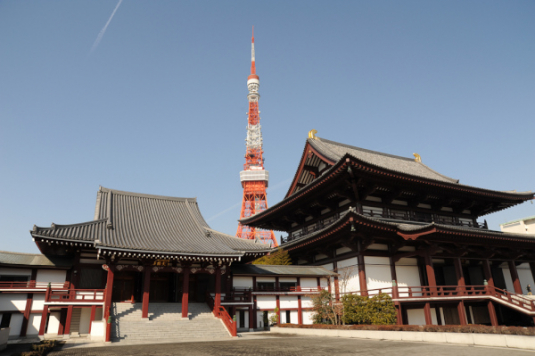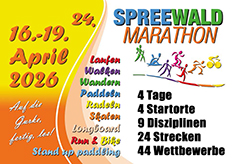marathon4you.de
Nothing is impossible (english Version)
Photo: Kay Spamer
Translated by Dawn Blair
Marathon in the largest city of the world
The alarm was sounded when the sighting of a battered and bleached wooden ship with its sails in tatters glided uncontrollably into the harbor. At the end of nineteen catastrophic months, William Adams and twenty-four desperately ill and dying crew members arrived off the island of Kyūshū, Japan. They had crossed the Atlantic and Pacific oceans, had survived Antarctic and tropical conditions. William Adams had made it to Japan and so had we.
Shorty before landing I was awoken by the flight attendant who was announcing our arrival at the international airport of Narita. In my hands, I was holding Giles Miltons book “Samurai William: The Englishman who opened Japan” who in 1600 became stranded in Japan. What adventures await us?
It’s daytime, my body is telling me it’s nighttime. I have forgotten how many hours separate me from home. For approximately 11 hours we were held captive in the belly of the Airbus 380. Now the giant regurgitated over 500 passengers with their baggage. Did you know that 9 out of 10 suitcases and bags that are used for travelling are black? Of course, ours too! When they finally arrive at baggage collection and the carousel swung into action, the tension is noticeable among the guests who hope to snag the correct luggage. Friendly customs personnel check the validity of our passports. We do not need a visa. Welcome to the multimillion inhabitant metropolis of Tokyo.
Sightseeing as an adventure
Of course we know Japan – if only from the school atlas, longitude, latitude, rivers and cities. The underground map resembles a crossword puzzle, but what do you do when you can’t even read it? A taxi is out of the question because a trip will cost €250. In Germany we bought a Japanese rail pass. This is the best and cheapest way to travel in Japan, at least for the long distances. Be careful though, you can’t buy this pass when you are already in Japan and it is only for tourists that are visiting the country. Only 60 Kilometers divide us from the city, where over 10 million people live, and over 800,000 businesses are run. It is 8.30 a.m. We have only been in the country one hour and we have managed to hit the rush hour, my worst nightmare. Thousands of people are making their way to work. The trains are so full. Men in uniforms wearing white gloves are cramming the commuters into the trains. If the doors can’t close, they pull some of the commuters back out. The passengers are quiet, nobody talks, nobody telephones, and there is no annoying loud music. The commuters are squashed in like sardines in a tin. This is certainly not for the faint hearted or those that suffer from claustrophobia. We arrive at the biggest train station in the world and can thankfully get out. The train station is spotless, no litter to be seen anywhere.
Tokio Hotel
New lodgings - that is the translated name of the district Shinjuku. It is a major commercial and administrative centre, housing the busiest train station in the world.
Unprecedented service is part of the package as two maids chaperone us to our room without expecting a tip, which hence they wouldn’t accept anyway. But, smiling and bowing which holds a high status in Japan, and is a thank you of its own. The lift that takes us to our room unfortunately stops on the 12th floor. Our hotel is not new, but with 1,440 rooms belongs to one of the highest hotels in Tokyo. When the weather is good, so they tell us, one can see Mount Fuji (Fuji-San) 120 Km away. What we, however, can see is the beautiful Town Hall. With its twin towers it reminds us of the Notre Dame in Paris. This will be the start line of the marathon. Late into the evening we can still see the lights on in office buildings. Wearing “Yukata” bathrobes we are fixated by the sights around us and we feel like Bill Murray and Scarlett Johansson as lost guests in Tokyo in the film “Lost in Translation”.
Pachinko and traditional food in the heart of an illuminated business Temple
Our curiosity and hunger drives us onto the streets of Shibuya. Blinking neon advertisements and video clips on huge screens, loud amusement arcades, karaoke bars, and advertisements of all sorts defacing high rises. Here to be found a patchwork of pedestrian crossings on one of the busiest crossroads in the world. Waves of people surge across the streets on green and as regimented and disciplined as army cadets stop on red.
There are roughly as many restaurants as in Pachinko temple. Young women shout incessantly into megaphones to draw customers, which appears to be very successful. We enter through an electric, sliding glass door into an amusement arcade and observe housewives, workers, students and retirees sitting back to back in endless lines staring at tall gaming machines in which thousands of silver colored balls zip around. With a knob you can control the speed of the gaming ball through the labyrinth of nails. It’s grotesquely loud. Blaring Japanese pop music and vocal advertisements permeate the air. To top it off there is a hazardous blanket of cigarette smog that chokes the lungs and flight back into the open is our only option. This is truly an odd atmosphere and a world which is totally foreign to us. For many Japanese the lure and glitz is irresistible. Apparently, unofficially, there are 30 million hardcore game players and 20 million casual players in Japan.
Once outside, an American fast food chain offers with its burgers not ketchup, but Teriyaki, a sweet soya based sauce. My desire for rice pudding with sugar and cinnamon will have to wait until our return to Germany, as the Japanese believe rice made with milk is a spoil of their valuable and staple diet.





 Tokio Marathon
Tokio Marathon








 zur�ck zur �bersicht
zur�ck zur �bersicht






















